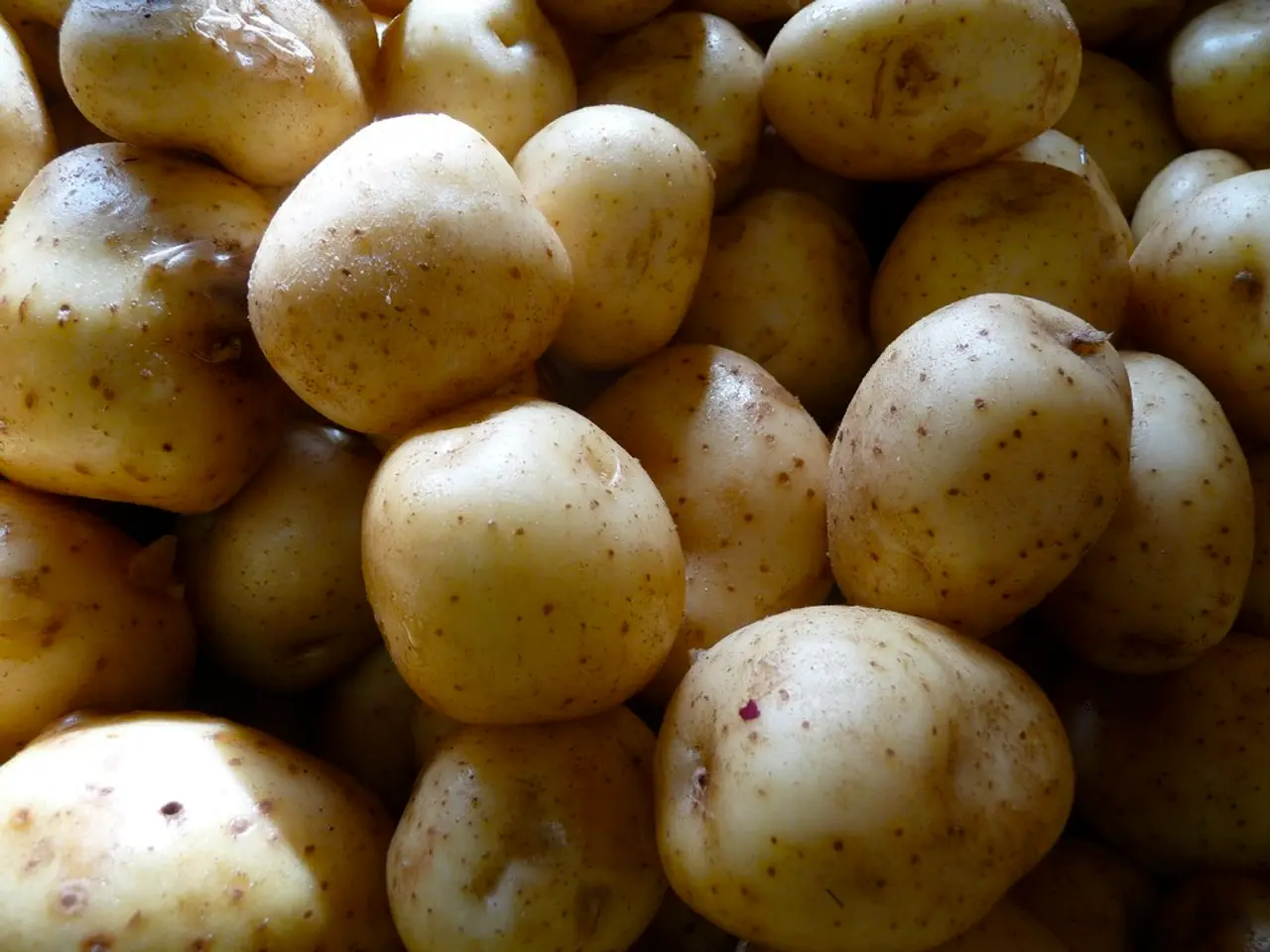Weekly consumption of three fries can augment the likelihood of developing diabetes
A recent study, analysing data from cohort studies in the US conducted over a period of nearly four decades, has shed light on the relationship between potatoes and French fries consumption and the risk of developing Type 2 Diabetes (T2D) [1][2][3].
The study, involving over 205,000 healthy healthcare professionals, found that boiled, baked, or mashed potatoes are not significantly linked to an increased risk of T2D, whereas eating French fries is associated with a notably higher risk. Specifically, consuming three servings of French fries per week increases the risk of developing T2D by about 20% [1][2][3].
Cooking Method Matters
The preparation method plays a crucial role in health outcomes. French fries, typically fried in oil, contain added fats and calories, which likely contribute to the increased diabetes risk [1][5]. In contrast, boiled, baked, or mashed potatoes are usually lower in added fats and calories [1][5].
Starch and Glycemic Load
Potatoes have a high starch content, which can raise blood sugar and increase diabetes risk. However, resistant starch, which slows glucose absorption, varies by potato type and preparation. For example, cooling boiled potatoes increases resistant starch, reducing glycemic load and potential risk [5].
Nutritional Factors
Potatoes provide beneficial nutrients such as fiber, vitamin C, and magnesium, but these benefits are dampened when potatoes are fried or served with unhealthy fats [5].
Whole Grains and Replacement
Substituting any form of potatoes with whole grains further lowers the T2D risk, especially compared to fries. Replacing whole grains with potatoes or white rice may increase risk [1][2][4].
Other Considerations
The researchers acknowledge that their observations do not allow for definitive statements about a causal relationship. Unconsidered factors may also have an influence on the findings [1].
Implications
The difference in risk between fries and other potato preparations highlights how the cooking method and added ingredients influence diabetes risk, with French fries linked to higher risk largely due to frying-related factors rather than the potatoes themselves [1][2][5].
Healthy and Sustainable Diet
The study also emphasises the importance of whole grains in a healthy and sustainable diet. Potatoes, with their low ecological footprint, should not be overlooked as a nutritious carbohydrate source [6]. However, whole grains should take precedence over potatoes.
Replacing fries with whole grain dishes reduces the risk of T2D by 19 percent [1]. Potatoes are often suspected of increasing diabetes risk due to their starch content. However, this study suggests that the cooking method and added ingredients play a significant role in diabetes risk.
During the nearly 40 years, around 22,300 participants developed T2D. The researchers also included long-term studies from other countries in their analysis [1]. This difference is likely due to the fats, salt, and substances formed during frying in fries [1].
[1] - Study published in the "British Medical Journal" [2] - Harvard T.H. Chan School of Public Health [3] - American Journal of Clinical Nutrition [4] - Diabetes Care [5] - Journal of Agricultural and Food Chemistry [6] - Environmental Science & Technology
- The study suggests that the cooking method and added ingredients significantly contribute to diabetes risk, as shown by the higher risk associated with French fries compared to other potato preparations.
- Consuming three servings of French fries weekly could increase the risk of Type 2 Diabetes by around 20%.
- Potatoes, while having a high starch content, can still be beneficial as they provide nutrients like fiber, vitamin C, and magnesium, but these benefits are negatively affected when potatoes are fried or served with unhealthy fats.
- The researchers indicate that whole grains, not potatoes, should take precedence in a healthy and sustainable diet to further lower the risk of Type 2 Diabetes, with replacing fries with whole grain dishes reducing the risk by 19%.




